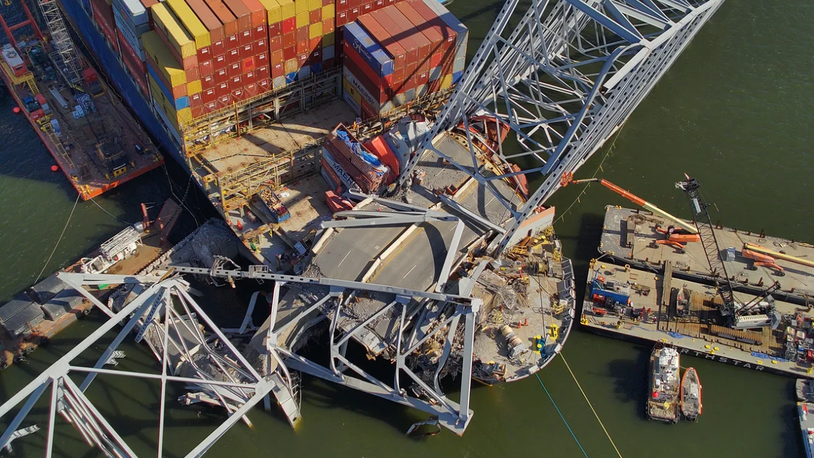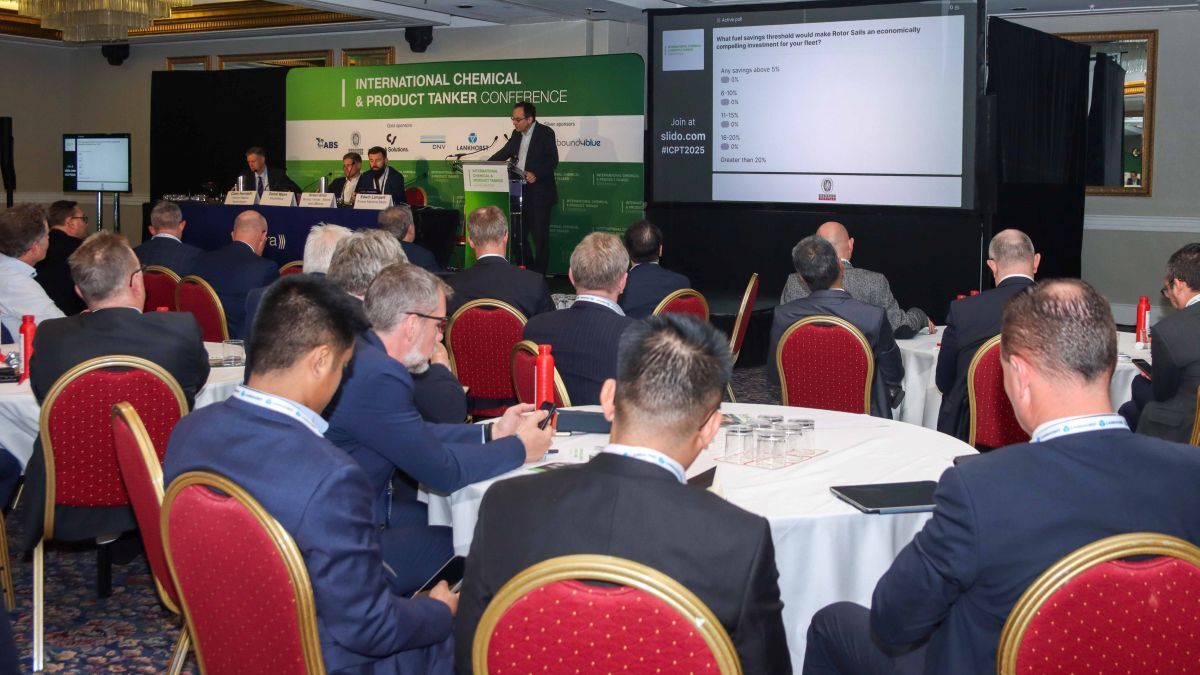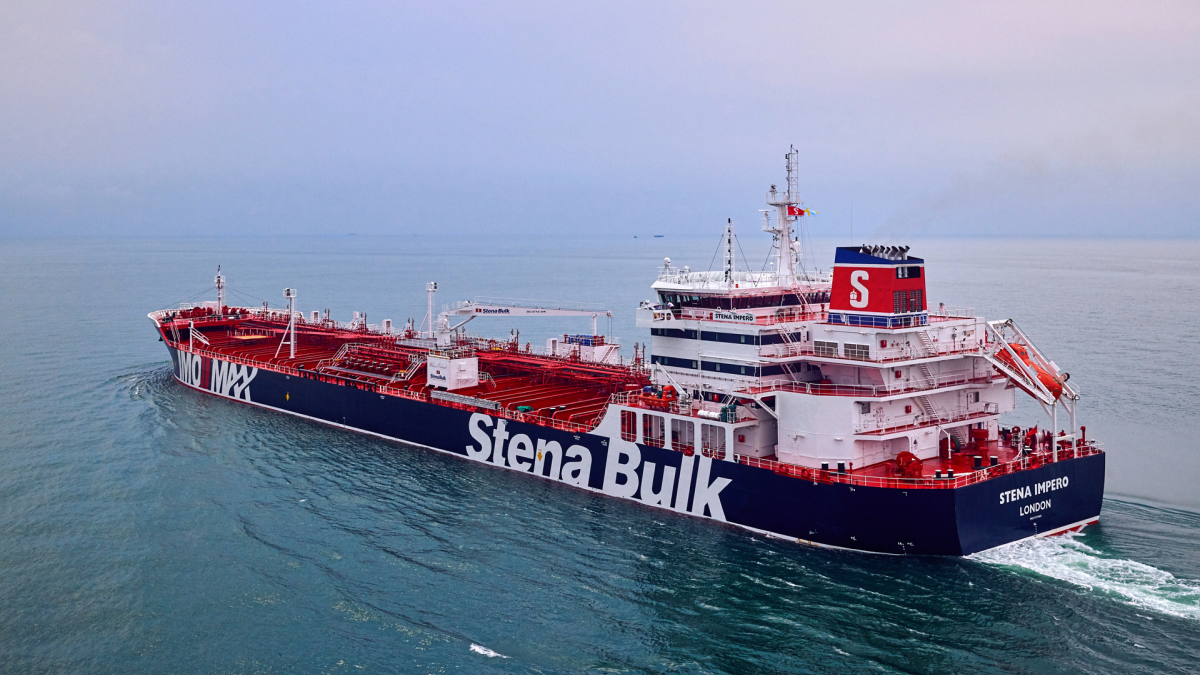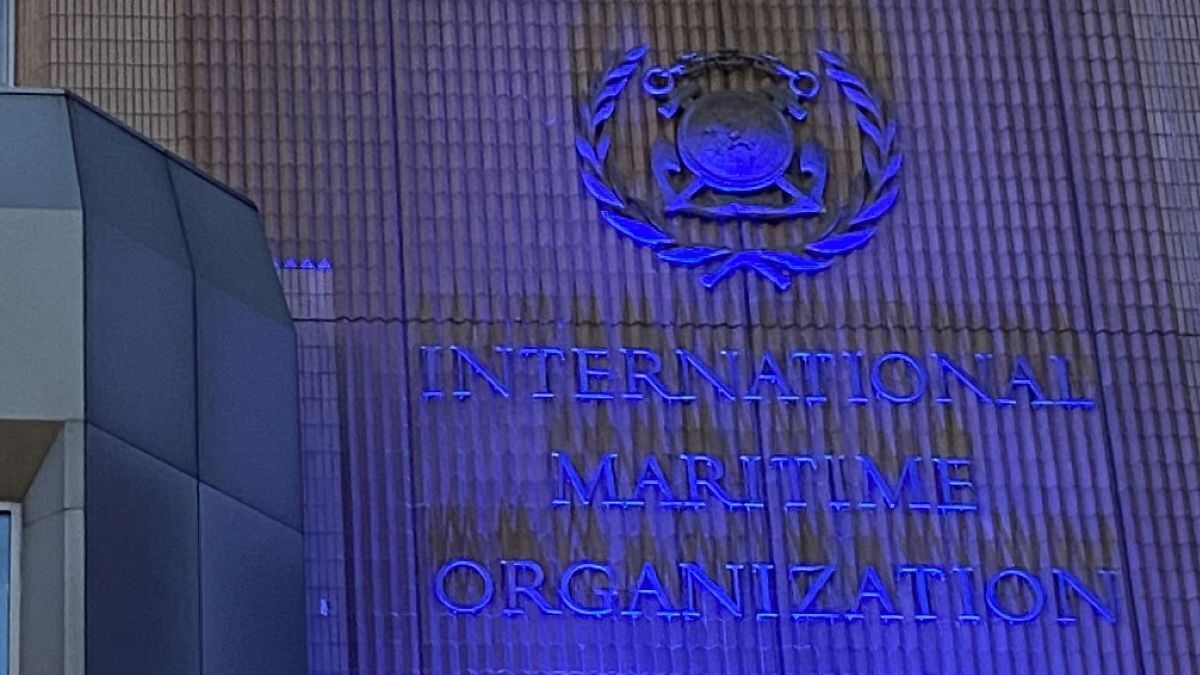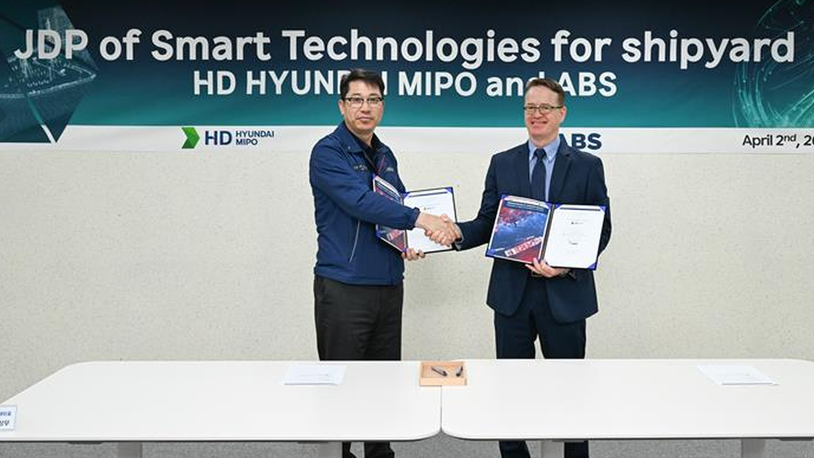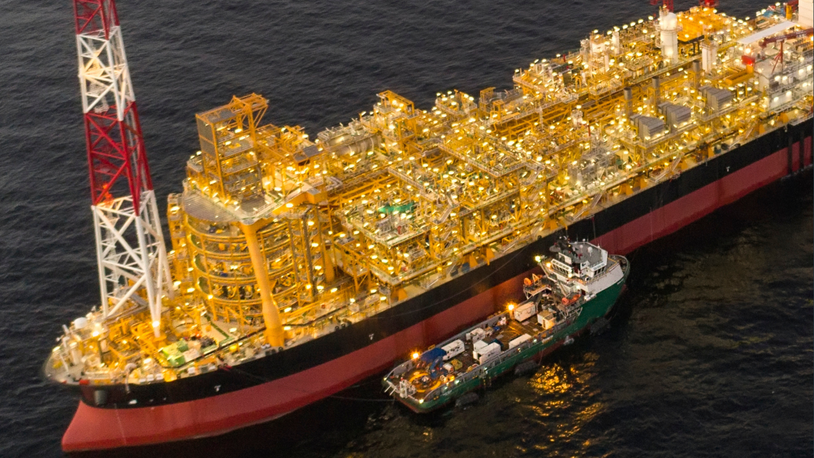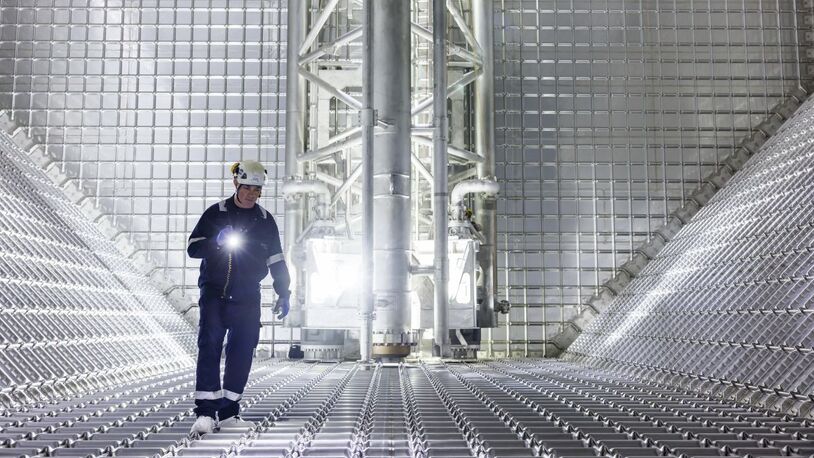Business Sectors
Events
Contents
US suppliers deliver bridge integration and functionality
The increasing number of inputs and processes to be monitored from an integrated bridge system (IBS) has brought human factors to the forefront in bridge design. At the same time, owners’ desires to reduce crew sizes have fuelled the trend towards bridge integration. According to IMO, “The integrated navigation system (INS) supports safety of navigation by evaluating inputs from several sources, combining them to provide information giving timely alerts of dangerous situations and system failures and degradation of integrity of this information.”
Where components are integrated to support route monitoring and collision avoidance functions at a minimum, the official INS definitions apply. INSs are the subject of an IMO resolution, MSC.252(83), which applies to newbuildings equipped with integrated bridge systems delivered after the beginning of 2011.
The planners and marketers at Northrup Grumman Sperry Marine have their eyes on regulatory developments. Sperry Marine’s managing director, Alan Dix, says there are a number of upcoming regulatory changes that will have an impact on the products that comprise the Sperry Marine IBS. “These include the ecdis carriage requirement and associated changes to our ecdis product. In addition, there is the activity on both IMO bridge alert management and new ecdis software maintenance and training requirements. We are also closely following the work of the IMO committee on the e-navigation standard.”
In practical terms, integrated bridges need to have consistency in data display and in management of alerts and alarms, across multifunctional workstations for radar/plotting, ecdis and conning, steering and auto-piloting, AIS, DGPS and a host of other navigation functions. Depending on the installation, other ship systems may also be integrated with the INS. Mr Dix says defence segment created technologies are gradually filtered into the commercial sector.
He continues: “In the commercial sector, safety and risk mitigation are most important for our customers when selecting an IBS supplier. Sperry Marine supportability and redundancy are also extremely important in order to keep the vessels on schedule.” In describing the key customer considerations, he says, “Cruise lines such as Royal Caribbean – one of our long-term customers – are extremely focused on these aspects, as well as on performance as it relates to fuel efficiency and ship stability. The levels of integration and redundancy are usually greater on these vessels because they tend to be more sensitive to any issue that might cause a schedule delay. The same is true for product carriers, though to a lesser degree.
“Sperry Marine is one of the few marine equipment suppliers who designs and manufactures most of the primary navigation components that comprise an IBS. The Sperry Marine components include the VisionMaster radar and ecdis, autopilot, gyrocompass system, speed log, integrated alarm management system, conning display system, magnetic compass, steering controls, network architecture system and full bridge console.”
Mr Dix spoke about his company’s positioning in the market, which extends far beyond US shipyards. He says: “In the US market, Sperry Marine primarily sells to vessel owners, who then specify the Sperry Marine IBS for their newbuilding projects in foreign shipyards. There are also a small number of bridge systems that are sold into shipyards in the US, including some bridge retrofit projects.”
Integrated bridges have found their way into a vibrant offshore sector centred on ships built for the US oil industry - where DP is required for long periods of station keeping. Kongsberg Maritime’s US senior sales manager, Ted Murphey, says that the company’s main product sales in North America are for its DP systems. “The DP system interfaces control all effectors on vessels,” he explains. “We took it one step further, adding thrusters control systems, and then alarm and monitoring systems (for engines, pumps and tanks), which made for seamless integration on the same platform. Then, as the final step, we put the integrated bridge onto the same platform, which completes what we call ‘the full picture’. For customers, there is one purchase order – there is also much less cabling and man hours. A customer will not buy the K-Bridge as a stand-alone product, unless they are buying something else from us. We also supply environmental sensors, including the gyro, and positioning sensors.”
From the buyer’s business standpoint, Harvey Gulf International Marine’s chief executive, Shane Guidry, says offshore service vessel (OSV) operators have high regard for system integration. He adds, “With an integrated setup, you get one-stop shopping. You do not have to be calling 10 vendors when there is a problem. When there is finger-pointing, it costs time and money; but you avoid that with an integrated approach.” Harvey Gulf has just announced the acquisition of rival vessel operator Bee-Mar, increasing its OSV fleet to 34 vessels.
Mr Guidry says that Harvey Gulf’s Tiger Shark class vessels (90m long OSVs), being built at Eastern Shipbuilding, have the Converteam package. He says that these vessels are the only ships in the US Gulf to have the Navigation Bridge Layout (NBLES) notation for equipment and systems from ABS. This notation is an enhancement on ABS’s one man bridge operation (OMBO) notation. One of the Tiger Shark class vessels is scheduled to work for Hess in the US Gulf, and another for Shell in Alaska.
Harvey Gulf has attracted considerable attention with its orders of four dual-fuelled OSVs, to be built at another US Gulf yard - Trinity Marine. The STX-designed vessels will utilise Wärtsilä engines that enable the switching between LNG and conventional fuel. Mr Guidry says Wärtsilä also supplied the bridge package. This was part of its partnering agreement with Raytheon Anschütz to offer navigation systems in conjunction with Wärtsilä’s suite of propulsion systems.
Raytheon Anschütz’s vice president of sales, Frank Christophersen says this partnership is a growing trend in the industry. He adds, “Most integrated bridges are put together by an original equipment manufacturer (OEM) who assembles components from different manufacturers.” San Diego-based Raytheon Anschütz manufactures the main units of the integrated bridge – such as radar, ecdis, autopilot, gyro and speed logs. These are then integrated with components from other manufacturers, including GPS and AIS.
Mr Christophersen says part of shipowners’ purchasing criteria for IBS is compliance with regulations and safety considerations. This is part of Raytheon Anschütz’s success in selling its Synapsis IBS, or variations based on the same technology, to the high-end shipowners, such as cruise ship operators and oil companies, as well as the quasi-commercial Military Sealift Command. Mr Christophersen says that bigger customers would look at the life-cycle costs, rather than simply comparing the upfront costs, for a unit that meets the regulatory minimum.
In US Gulf shipyards, the integrators play a vital role, tying all the components together and making sure that they communicate with each other. Jacksonville, Florida-based Gaylon Barcom, a senior integration and applications engineer at S&S Metal & Plastics says, “Even the large buyers, including the government, are moving towards commercial off the shelf (COTS) systems where possible. If the components talk to each other, work in concert, and have a workable form and fit, COTS will be preferable.”
OSV operators Hornbeck Offshore and Seacor have shown a preference for Furuno and JRC equipment. Mr Barcom says, “Many small technical shops have developed a capability to service Furuno and JRC radar, ecdis, echosounder and speed logs, and that is important to buyers. Furuno has been active with other owners in the offshore sector. For example, the US centric Gulf Offshore Logistics, with a group of recently delivered DP platform supply vessels, has gone with a Rolls-Royce bridge system (integrating a suite of Furuno products). Rolls-Royce also supplied thrusters on these Louisiana-built vessels.
Integrated bridges installed on Jones Act tankers
In the United States, most deepsea ship construction is focused on providing tankers to cover Jones Act trades. Oil companies are constantly upgrading or ordering new tankers to cover Jones Act routes, principally Alaska and West Coast trades, and ordering US-supplied integrated bridge systems (IBS).
Raytheon Anschütz gained a contract in 2011 from Polar Tankers (a ConocoPhillips subsidiary) for retrofitting an older version of IBS on tankers that serve Alaska and the US West Coast. Also in the Alaska tanker trades, oil company BP utilises a series of four 185,000 dwt tankers with IBSs supplied by Japan Radio Co. These 1.3 million barrel capacity tankers are operated by Alaska Tanker Co, and were built between 2004 and 2006 in the General Dynamics-owned NASSCO shipyard in San Diego.
A series of 46,000 dwt tankers built at Aker Philadelphia’s shipyard, for companies controlled by Overseas Shipholding Group, reflect the complexity of integrating different bridge components. These tankers’ IBS are hybrids, with a gyro and autopilot from Raytheon Anschütz (the STD22), and Furuno’s radar/plotting (FAR-2837S and FAR-2827) and ecdis (FEA-2107).
Marine Technologies IBS is designed for offshore vessels
One of the largest OSV operators in the US Gulf, and beyond, Edison Chouest Offshore, is an investor in its own specialist integrated bridge solutions provider, Marine Technologies The company was originally founded in 2002 to offer DP systems. Marine Technologies’ Bridge Mate IBS is designed for the offshore sector and offers redundancy through its dual network architecture. It has displays available on multifunctional work stations, which can also handle the control of thruster systems, for all-important station-keeping in the offshore sector. Besides Edison Chouest, the customer list includes Bourbon Offshore and Seacor.MEC
Related to this Story
Events
Maritime Environmental Protection Webinar Week
The illusion of safety: what we're getting wrong about crews, tech, and fatigue
Responsible Ship Recycling Forum 2025
© 2024 Riviera Maritime Media Ltd.


